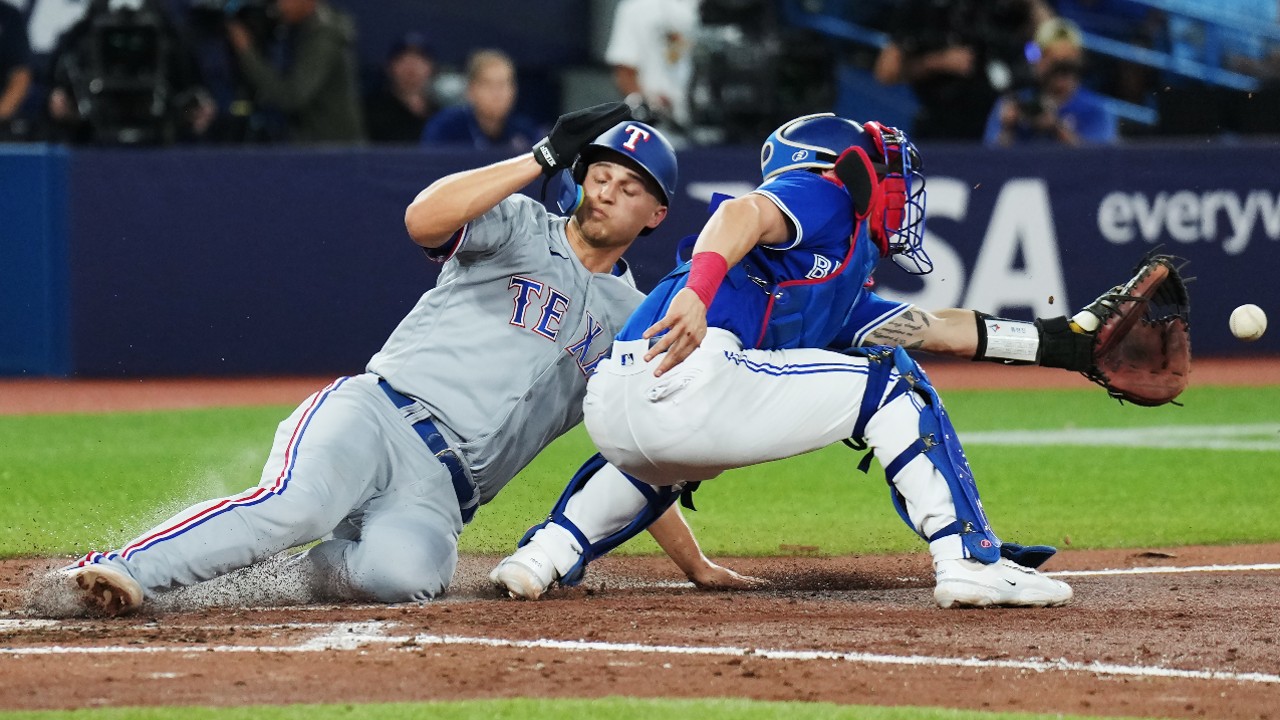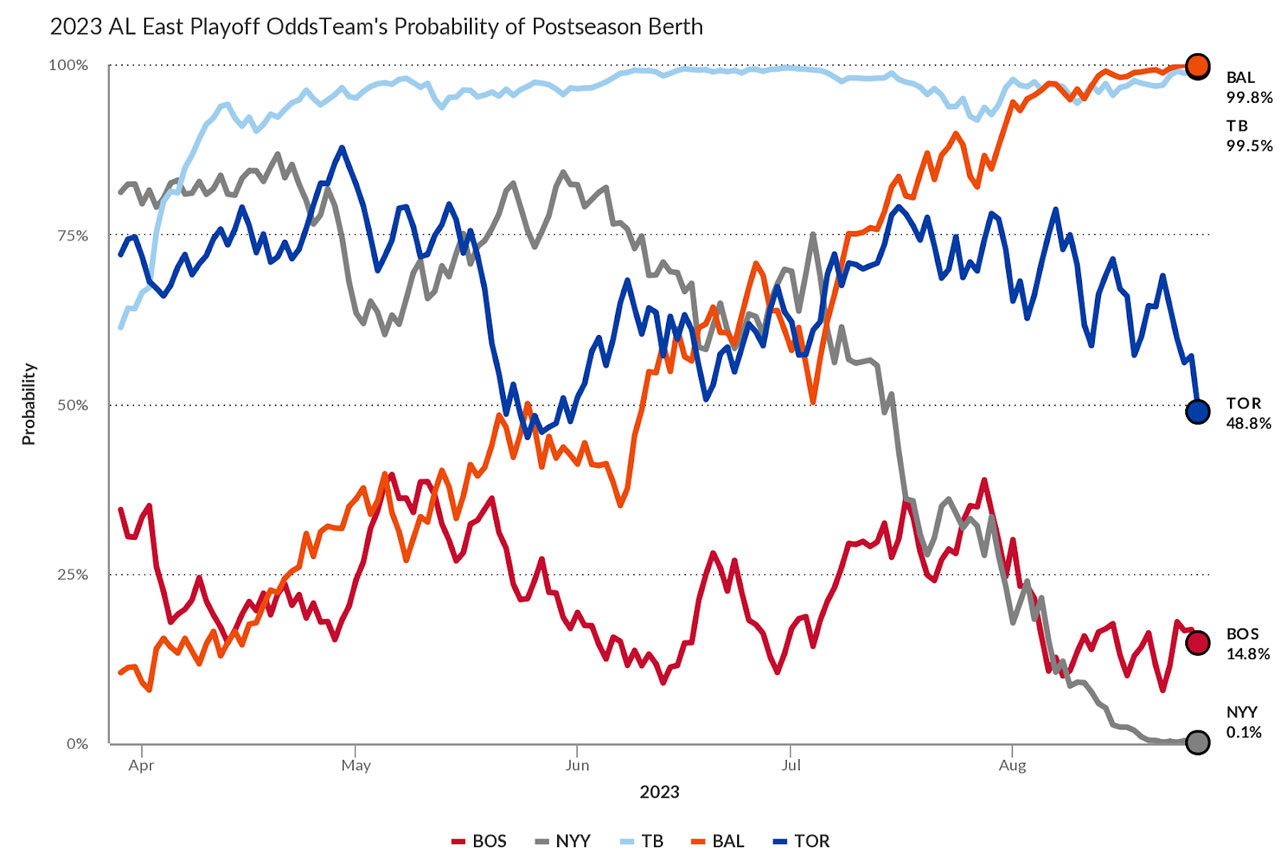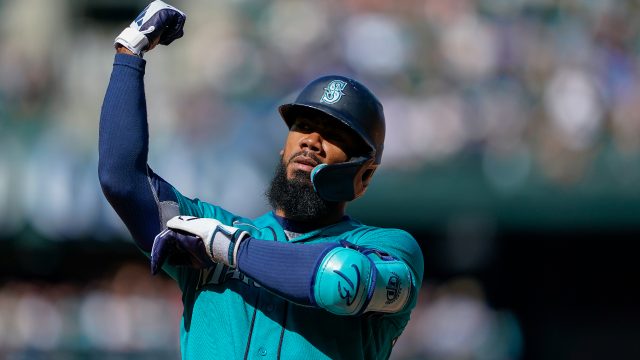
When the Texas Rangers came to town on Monday the Toronto Blue Jays got a taste of baseball that’s tantalizingly close to playoff action.
No, the team won’t literally live or die with every win and loss, but this is the team’s last series against a primary wild-card rival and it’s had a radical effect on Toronto’s playoff odds. The team entered the four-game set with a 79.3 per cent chance of making the postseason — according to FanGraphs — and that’s shifted to 45.3 per cent after going 0-3.
The playoff-like series with the Rangers has not been kind to the Blue Jays thus far, and the team’s failure to perform in this high-stakes battle brings their prospects in a real post-season showdown into doubt.
It’s easy to take the team’s showing against Texas as a sign that they aren’t up to the task, but it’s wiser to use a more measured approach to examine what type of playoff team the Blue Jays can be.
Unfortunately for the Blue Jays, they have structural issues that are likely to hamper their ability to thrive in the playoffs — even if they manage to reach the wild-card round.
To be clear, Toronto has a few qualities that would be beneficial in the postseason. Kevin Gausman is an ace that few teams can match, the offence still ranks seventh in the majors in wRC+, and this team’s defence is among the best in the major leagues.
If pitching and defence win championships, the Blue Jays could be a real threat in the playoffs. That cliche paints an overly simplistic picture, though. It’s tough to win if you can’t catch the ball or get quality innings, but how your pitching staff is organized matters — as does your ability to put runs on the board.
That has been a problem for the Blue Jays all year as they rank 16th in the majors in runs scored, despite enjoying relatively good health until recently. Their 108 wRC+ suggests they should be a better offence than that, but their strengths don’t align with what’s needed to win playoff games these days.
Specifically, we’re talking about home runs. The long ball was the primary method the Rangers used to win three in a row against the Blue Jays, and clearing the wall is crucial to playoff success. In an article written for MLB.com back in 2020, Mike Petriello found that the percentage of playoff runs coming via home runs had been steadily rising for years.
That season 51.3 per cent of playoff runs came via homers and teams that out-homered their opponents went 25-2. That percentage held steady the next year at 49.8 after sitting in the low 40s for most of the 2010s.
It may not seem intuitive for home runs to take centre stage when the quality of pitching improves, but with hits — and even balls in play — harder to come by against elite competition, it’s tough to mount extended rallies. Catching a top-notch starter or reliever making a single mistake is a more reliable method for scoring.
That’s not good news for a Blue Jays team that ranks third in the majors in singles, but 18th in longballs. The offence they’ve managed in 2023 has been rally-dependent, and despite having the second-lowest ERA in the majors their home-run differential is -11.
In terms of pitching, Toronto has a staff that is more deep and balanced than top-heavy. The team has Gausman, but behind him their group of José Berríos, Chris Bassitt, Yusei Kikuchi and Hyun Jin Ryu contains four above-average contributors as opposed to two true difference makers more likely to impact a short series.
The other teams in the AL wild-card race — besides the Rangers, who’ve lost Max Scherzer and Jacob deGrom to injury — and the Minnesota Twins all have more dynamic options behind their aces.
|
Team |
Second/Third Starters |
Combined fWAR |
|
Twins |
Sonny Gray/Joe Ryan |
8.0
|
|
Mariners |
George Kirby/Logan Gilbert |
7.3
|
|
Rays |
Zach Eflin/Aaron Civale |
6.9 |
|
Astros |
Justin Verlander/Hunter Brown |
4.8 |
|
Blue Jays |
Jose Berrios/Chris Bassitt
|
4.6 |
Toronto’s bullpen has a similar issue where there is quality throughout, but there isn’t a true eraser. The Jordans — Romano and Hicks — are legit high-leverage arms, but of the 179 relievers who managed 40-plus innings this year, the Blue Jays don’t have one in the top 20 by fWAR.
Their only reliever in the top 40 of that group by K/9 is Trevor Richards, and he has a 4.31 ERA. If we look at ERA, Tim Mayza’s (1.31) jumps off the page, but he’s not a pitcher who gets deployed in every situation.
Having a Felix Bautista or Devin Williams type is not a prerequisite for playoff success, but frequent off days and managers’ willingness to ride their top guys devalues the kind of bullpen depth Toronto has.
None of this makes it impossible for the Blue Jays to mount a successful playoff run, as bizarre as that may seem at a low point like this. FanGraphs is even giving them a 2.4 per cent chance of winning the World Series.
You can close your eyes and envision a scenario where Gausman goes off, the offence plays closer to its previously established level of production — with a hint of Davis Schneider magic — and the dual Jordans hold onto leads for dear life.
There are plenty of positive things you could say about the Blue Jays that would be 100 per cent true, but as chaotic as the MLB playoffs can be there’s evidence to suggest this Toronto club doesn’t have a great composition for postseason baseball.
After a brutal start to their series with the Rangers, that’s been relegated to a secondary concern behind whether this team can get to the playoffs at all.







